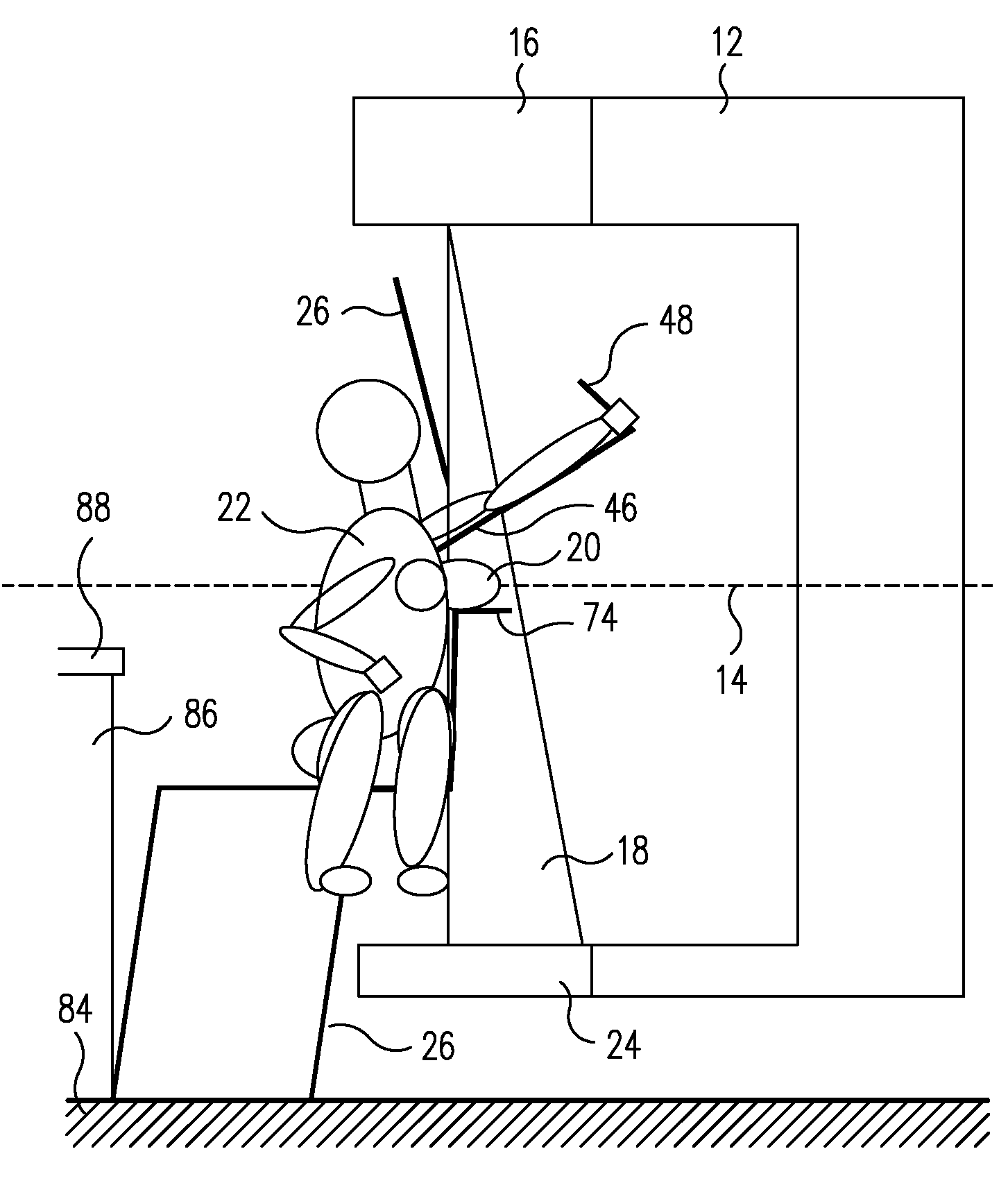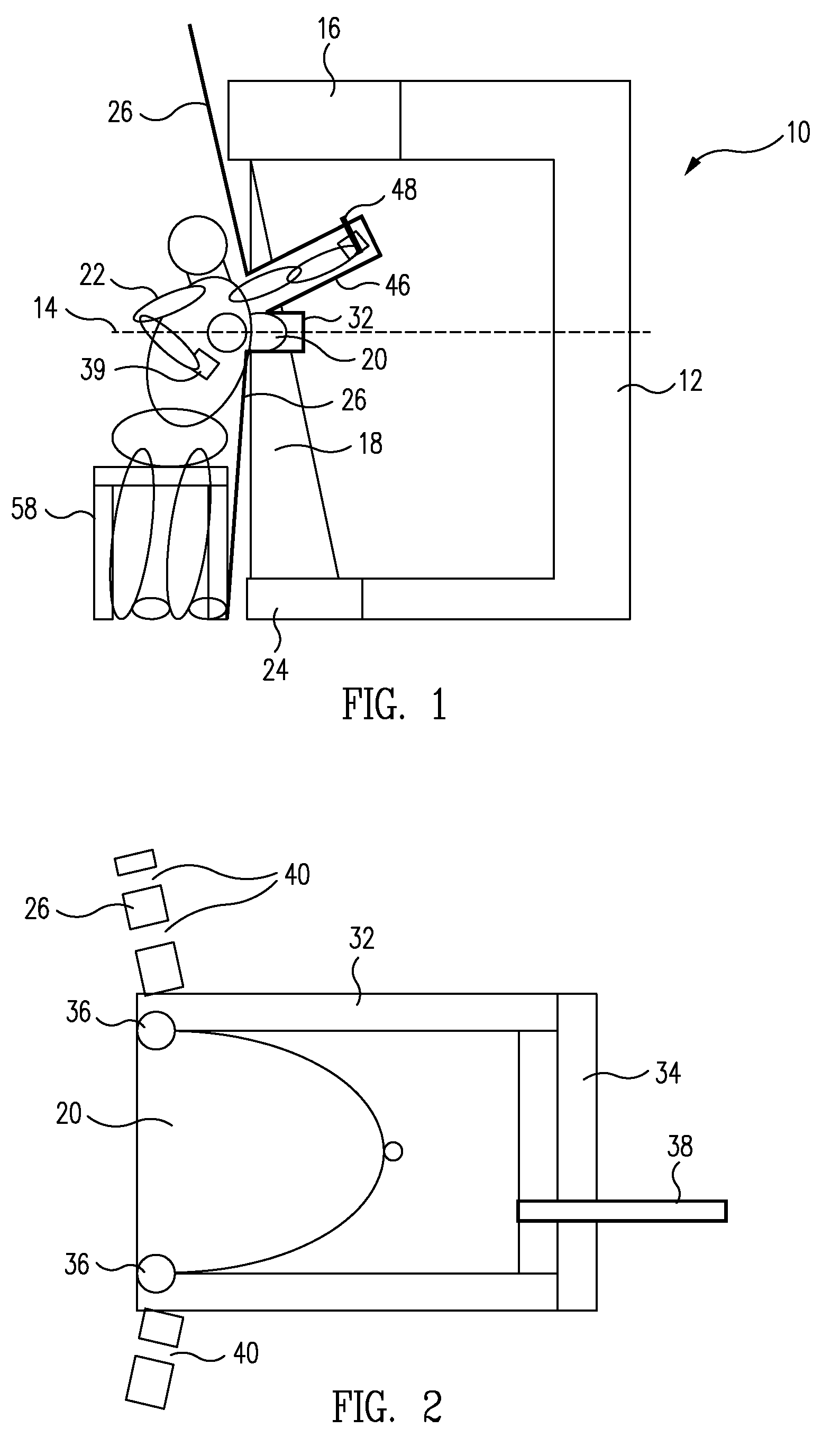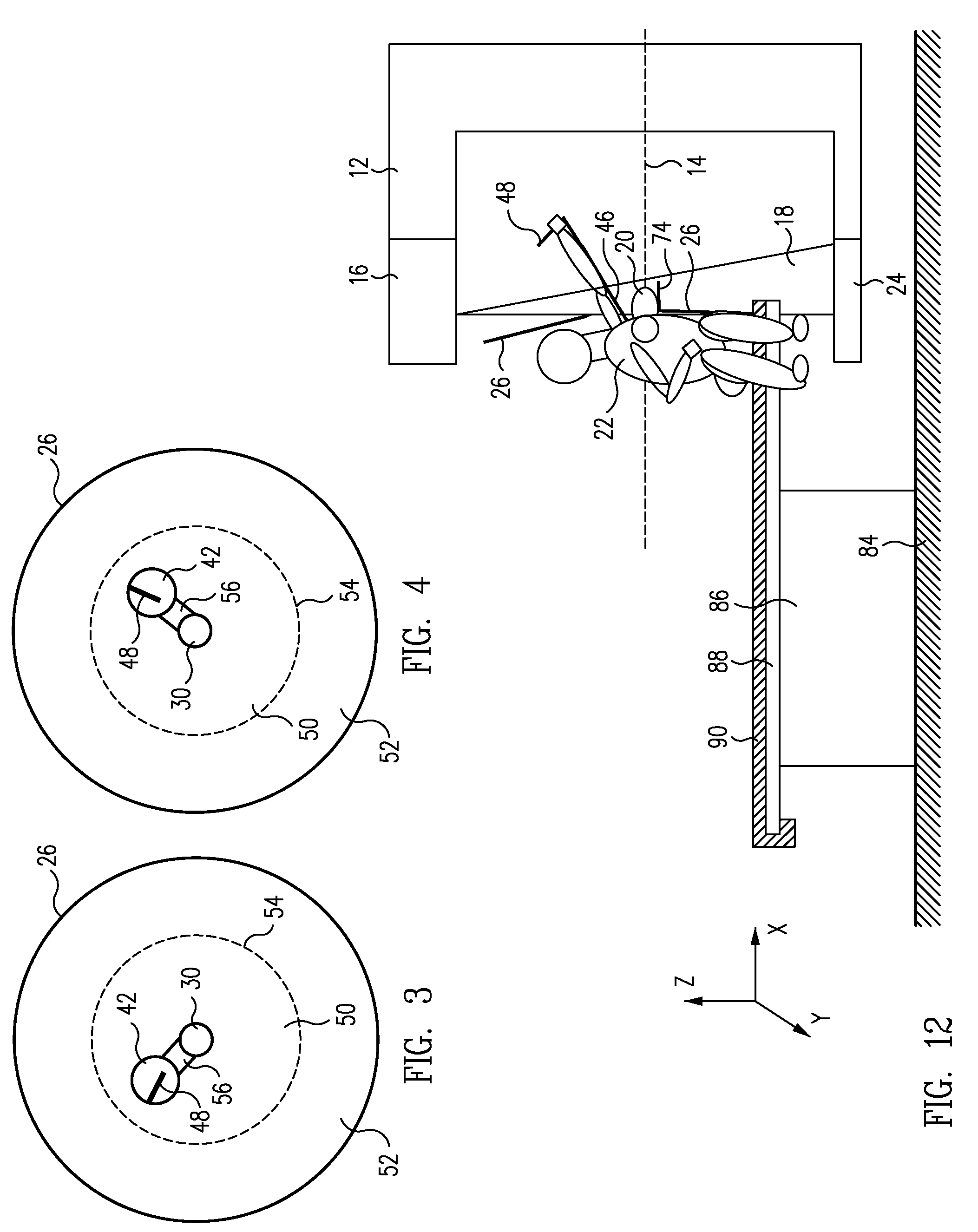System and Method for Imaging and Treatment of Tumorous Tissue in Breasts Using Computed Tomography and Radiotherapy
a breast cancer and computed tomography technology, applied in the direction of diagnostics, patient positioning, therapy, etc., can solve the problems of missing cancers, unnecessary surgical procedures, and limited prediction value and specificity of x-ray mammography, so as to facilitate breast positioning and prevent the formation of vacuum
- Summary
- Abstract
- Description
- Claims
- Application Information
AI Technical Summary
Benefits of technology
Problems solved by technology
Method used
Image
Examples
Embodiment Construction
[0044]Referring to FIGS. 1 to 18, where like elements are designated by like references, various exemplary embodiments of the radiation system and method of the present invention will now be described. In general, the radiation system includes a gantry comprising a radiation source for generating a radiation beam to irradiate a portion of a body, a detector spaced from the radiation source, and a structure positioned between the body and the gantry. In the present specification, the invention is described with embodiments where a human breast is irradiated, for example, for the purpose of forming an image thereof. It will be appreciated that the claimed invention may be used on animals as well as humans, and may be used on different body parts. The structure is described in the illustrative embodiments as a protective barrier that prevents at least a portion of the radiation from reaching other portions of the body, but can perform different or additional functions. For example, the...
PUM
 Login to View More
Login to View More Abstract
Description
Claims
Application Information
 Login to View More
Login to View More - R&D
- Intellectual Property
- Life Sciences
- Materials
- Tech Scout
- Unparalleled Data Quality
- Higher Quality Content
- 60% Fewer Hallucinations
Browse by: Latest US Patents, China's latest patents, Technical Efficacy Thesaurus, Application Domain, Technology Topic, Popular Technical Reports.
© 2025 PatSnap. All rights reserved.Legal|Privacy policy|Modern Slavery Act Transparency Statement|Sitemap|About US| Contact US: help@patsnap.com



